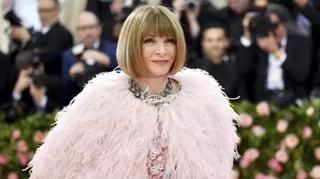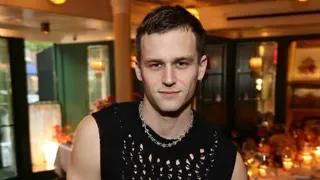October 12, 2009
Austria :: Vienna and Beyond
Eric Rosen READ TIME: 12 MIN.
Based on an informal poll-basically we asked everyone we met the same question-we estimate that about only 2% of Austrians have seen The Sound of Music, that iconic, campy movie classic that put Austria on the map...or, at least made Americans aware of its existence.
That should tell you something about the real Austria: it has nothing to do with raindrops on roses, frolicking in the hills and lakes around Salzburg, or making lederhosen out of drapes.
Rather, the Austria of today is about exciting international destinations like Vienna, thrill-seeking activities like lake windsurfing, as well as sophisticated tastings in Austria's renascent wine industry, which benefits from a location alongside some of Austria's most visited tourist sights.
Vienna
First, Vienna. This city, long one of the Europe's most cosmopolitan centers, has an extensive gay past that reveals itself all over the town. It was home to such gay luminaries as composer Franz Schubert and military hero Prince Eugene of Savoy, and even the world-renowned Staatsoper opera house was designed by a pair of gay lovers...who eventually committed suicide due to the hail of criticism their baroque structure provoked.
Today, most gay visitors seem to come for the annual Life Ball, a star-studded HIV/AIDS benefit that takes place in the Rathaus Platz (City Hall Plaza) every summer. Though it would make a fantastic centerpiece to any traveler's Austrian itinerary, there is plenty more to keep you busy during a stay in this beautiful city-which is a good thing because tickets, which range from $75-150 directly from the organizers but are usually much more expensive because they are extremely limited in number and allotted very sparingly-are so hard to come by!
Vienna is home to a slew of new, boutique design hotels like the ultra-fashionable (and accordingly expensive) DO & Co. Hotel right across from the famous St. Stephensdom cathedral. The trendy Altstadt Hotel is in the bohemian 7th District, and the friendly Hotel Rathaus Wein and Design, where each room is named after a famous Austrian winery, and the wine bar is one of the best stocked in the city, is conveniently located near the neo-Gothic City Hall.
You don't come to Vienna to stay put in your hotel, though. Venture out to the city's world-class museums, especially the ones around the old imperial palace complex, the Hofburg. There you will find Kunsthistoriches Museum, with its collection of paintings by old masters like Rembrandt and Rubens, the Albertina, whose permanent collection of modern art has finally gone back on display, and the old imperial treasury, the Schatzkammer, which houses the Hapsburg family jewels.
On the other end of the spectrum is the nearby Haus der Musik, which is devoted to Vienna's musical history, and contains exhibits on the physics of sound as well as historical installations about the lives of famous composers. In the final room, you can conduct a virtual session with the Vienna Philharmonic.
The www.mumok.at|MUMOK modern art museum, and the Leopold Museum, whose collection is based around Austrian artists like Klimt and Egon Schiele.
-
Of course, any gay trip to Vienna would not be complete without visits to one of the best decorative arts collections in the world, the imposing but manageable Liechtenstein Museum, and the enormous (and yellow!) former home of the Austrian royal family, Sch�nbrunn Palace, just outside the city center but accessible by metro. Let's not forget the Belvedere Palace either, which was once home to the aforementioned Prince Eugene, and now houses an amazing collection of works by Gustav Klimt.
Though you won't find too many beaches or swimming pools, in the summer, the Danube Canal that runs through the center of the city is the site of bars like the sandy Tel Aviv Beach, as well as an old barge that has been converted into a swimming pool-nightclub, the Badeschiff Wien, which literally means "pool barge." Just make sure you have your Borat one-piece clean and ready to wear.
Vienna is also fast becoming a culinary destination, with new restaurants from famous chefs popping up all over the city and serving cuisine that is a modern take on classic Austrian dishes (you know, like schnitzel, boiled beef, and spaetzle dumplings). We came across some truly excellent ones like chic Artner, which is owned by a winemaking family, fancy Meierei in the lovely municipal Stadtpark (with its famous statue of waltz-king Johann Strauss), and trendy Oesterreicher im MAK, probably the city's most buzzed-about new eatery in the Museum of Applied Sciences.
Of course, the best way to sample Vienna's food scene is simply to wander along the stalls of the Naschmarkt outdoor food market just off the Ring road where you can buy and try everything from produce to meats to fancy vinegars.
Vienna is equally famous for its classical music as its caf� culture, so start your day with a specialty coffee at the historic Caf� Sperl, where you'll still find the original 19th-century lighting fixtures despite two world wars and a Soviet occupation, and then end the day with a concert at the Musikverein, where the splendid d�cor is only slightly outshone by the phenomenal acoustics.
To go along with the food trend is the burgeoning Viennese wine scene. That's not just the drinking scene, but actual wine production that takes place within the city limits. Though Fritz Weininger is credited with starting the trend, check out some more recent (though just as highly regarded) winemakers like Rainer Christ and Stefan Hajszan, who both have upscale heurigen, or taverns, at their wineries where you can enjoy some nibbles along with the tipples. The only drawback is that it takes just about an hour to get to either from the city center, though you can make it on public transport at least.
Although not home to a huge gay scene, Vienna does offer some decent nightlife options that are a little more mellow and congenial than some other European capitals. Start the evening out with a casual beer amongst new friends at Caf� Savoy, then hit the popular Felixx caf�/bar, or the cozy Mango Bar in the 1st District. The newly reopened Village Bar is just two blocks over and draws a slightly more professional clientele. An older crowd congregates at Alte Lampe, across the Naschmarkt.
If you're in town on a weekend and in the mood for dancing, try Why Not, Heaven, or the popular G-Spot party held at Camera Club on the first Friday of the month.
For a full picture of all Vienna has to offer, and more information on the places mentioned above, take a look at the �ber-informative Vienna Tourism Board site: www.wien.info.
If you've got a little more time to spend in Austria but can't make it too far from Vienna, we'd suggest a couple of the following spots within an hour or so of the capital.
Wine-Tasting in the Danube Valley and Beyond
The town of D�rnstein is located on the most picturesque curve of the Danube River, cradled by jagged hills, and must be one of the world's most romantic towns-though it does get a bit touristy in the summer. According to legend, the ruined castle perched above the town-to which you can still hike today for some panoramic views-was the place where Richard the Lionheart's faithful troubadour, Blondel de Nesle, rescued him from the clutches of the evil Duke Leopold, who had captured Richard on his way home from the Crusades.
D�rnstein also presents the nicest and most convenient lodging options around, including the Sanger Blondel Gasthof, named after the legendary troubadour, the beautiful Hotel Richard L�wenherz named after his liege, and the luxurious Hotel Schloss D�rnstein. The last two both have high-end restaurants with huge terraces with the best views of the river. Travelers on a tighter budge can stay across the river in the town of Mautern at the Ad Vineas inn and guesthouse (run by the same family as the Nikolaihof winery below), where the large rooms are tidy and the service is friendly. It is also close to one of the area's best restaurants, Landhaus Bacher, whose young female chef has already made a name for herself throughout Austria.
Farther down the Danube are the ruins of Aggstein Castle, situated like a man-made aerie on a sheer rock cliff. Take the winding drive up there and stop for lunch in the keep at the traditional restaurant there, then continue farther east to Melk Abbey, one of the best-known abbeys in the world, with an extensive rare books collection, a gold-plated chapel, and which was made famous by Umberto Eco's novel, The Name of the Rose.
-
Now that you've gotten the historical part out of the way, it's time for some fun, and that means wine. Nikolaihof is one of the area's best known wineries. The winery is located on a site that has been in use for 2000 years. It started life as a Roman fort, then became a church before being converted into a winery. Today, you can try the biodynamic wines that they produce, along with the famous cooking at the onsite restaurant, which is renowned throughout Austria. In D�rnstein itself, you can get a good sampling of the region's wines (and as good a view of the river as at the more expensive restaurants) at the Alter Klosterkeller.
Historical splendor is all good and fine, but if you're looking for a bit of modern pampering in the country setting, try the Loisium Wine Spa and Resort in the town of Langenlois in the Kamptal Valley wine region just north of the Wachau. The resort features a gourmet restaurant (where you can get breakfast and dinner included in your room rate at a huge discount), an Aveda Spa, and, of course, an interactive little wine museum and tasting room on the property called the Wine Cellar World.
East of their more famous Wachau and Kamptal neighbors lies what is actually Austria's largest wine region, the Weinviertel, which is also home to one of Austria's largest winemaker, Norbert Bauer. Want to sample over a dozen of their last year's vintages? Stay the night at the little inn in the town of Jetzelsdorf hosted by Norbert's family, and maybe you will get serenaded by gypsy musicians like the ones that were staying there during our sojourn.
Can't get to the Life Ball, but still want to try the wine they serve there? Take a drive an hour east from Norbert Bauer (or just an hour northeast from Vienna itself), and make yourself at home in the heurige of Michael Martin. Martin's winery, Martinshof makes two wines-one white Gr�ner Veltiner, one red Zweigelt-every year for the Life Ball, and as he says, "Every sip helps!" His heurige is in the flyspeck village of Neusiedl an der Zaya, about an hour north of Vienna in an out-of-the-way corner of the country sandwiched in between Slovenia and the Czech Republic. We'll be honest: there's nothing to see there, but the food is good, the wine is delicious, and the setting is relaxing. Plus, Michael and his wife are just plain fun to hang out with.
Windsurfing and Wine in Burgenland
Though Austria might be more famous for its alpine ski courses in the west near Innsbruck, the country is also host to the second largest windsurfing competition in the world, which usually takes place in late May on the Neusiedlersee lake on the country's eastern border with Hungary. The Neusiedlersee is the largest steppe lake in Europe, encompassing about 122 square miles, but only reaches a maximum depth of less than two meters (about 6 feet).
The region around the Neusiderlsee, known as Burgenland, is also home to some of Austria's best known wines like those of the Esterh�zy princes who used to rule the region from Esterh�zy Castle in the town of Eisenstadt (which you can still visit), and were artistic patrons most notably to the composer Josef Haydn. Five minutes away is one of the country's most promising producers, Moric. Although you can't visit regularly, you can find their beautifully balanced and expressive wines on the best menus in Austria.
Closer on the lake itself are newer winemakers like ultra-modern Leo Hillinger in the town of Jois, and Willi Opitz, who makes some of Austria's most prized sweet wines, and who also operates a gourmet restaurant and small inn in the little town of Illmitz near the Hungarian border.
Just north of Illmitz is the windsurfing retreat of Podersdorf, with the nicest beaches on the lake. You need a pass to get to the beach, but it is usually included in your hotel rate. We'd suggest the new St. Florian's Hotel Pannonia, just 100 meters from the beach, because the buildings are all new, the rooms are neat and tidy (even if they are on the small side), you can use the high-speed internet for free, the restaurant is pretty decent, and unlike many of the other hotels in the area, it is air-conditioned!
On the western edge of the lake is the scenic town of Rust with its famous storks' nests, and the wine school where you can brush up on your oeno-appreciation in the company of the country's next generation of winemakers.
Just as exciting as any restaurants in Vienna are upscale seasonal eateries like Gut Purbach, which is housed in a 16th century former farmhouse in the tiny hamlet of Purbach on the lake's northern edge. For a swinging evening, however, follow the scenesters to Mol� West, a bar-restaurant right on the marina in Neusiedl Am See.
Austria has much to offer beyond the usual ski slopes and Mozart concerts. Within just an hour of Vienna, these two regions are just the beginning of all there is to explore in this fascinating, vibrant country.





